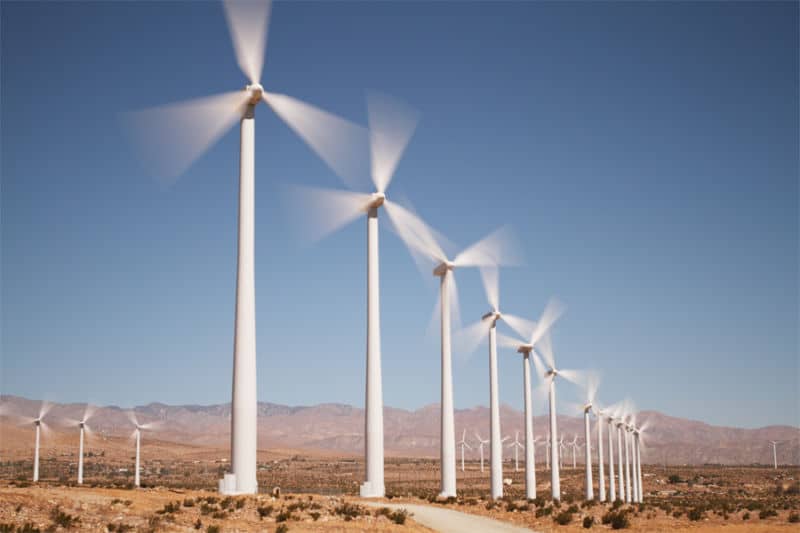
More and more people are finding themselves with a new neighbor: a commercial electricity-generating system. As electricity grids move from centralized fossil fuel plants to decentralized renewables, the world is switching from fewer, larger plants to more, smaller ones. For some people, this means they’re looking out of their windows at wind turbines that weren’t there a few years ago.
How do people feel about these turbines? That may seem like a question best answered with “why should we care?” but if we get serious about addressing climate change, lots of people might end up living with generating hardware. To better understand people’s preferences, researchers Jeremy Firestone and Hannah Kirk analyzed the results of a large-scale survey on attitudes toward wind turbines. The results, published this week in Nature Energy, show that people in both red and blue states who live near wind turbines would rather keep them than swap them out for either solar or fossil fuel plants.
Wind over coal
The results came from a survey of 1,705 people living less than five miles from at least one commercial-scale wind turbine across the United States. The survey, conducted in 2016 by the US Department of Energy’s Lawrence Berkeley National Laboratory, included a hefty set of questionsaiming to get a full understanding of how community members feel about their local turbines. It asked questions like how involved people felt in the planning process for the project, how noticeable the turbines are from people’s homes, and whether they notice the impact of things like turbine noise.
Because the data from the survey was publicly available, Firestone and Kirk were able to use part of it to delve into the question they were interested in: how did people feel wind power compared to other options? Research on people’s acceptance of wind power, they write, usually frames the question as being a choice between wind power or no wind power. But that’s unrealistic: society needs to generate electricity somehow, so they argue that the real question should be “whether society should generate electricity by wind or from some other source.”
So, they focused on the survey questions that explored people’s preference for wind power relative to other options. Those results were stark: around 90 percent of the respondents said they would prefer their local wind farm to a hypothetical nuclear, coal, or natural gas plant at the same distance from their homes. There was even a preference for wind over solar power, although that was less stark—around a third of respondents had no real preference, 15 percent said they would prefer solar power, and 45 percent said they were happier with wind power.
Those results were stable across different demographics. Across urban and rural areas, red and blue states, states that produce coal and those that don’t, people overwhelmingly preferred wind power. This held true even for the people who lived closest to the actual turbines, sometimes just around half a mile away from one. And this wasn’t just a case of people begrudgingly choosing the option they’d hate the least: on average, people had positive attitudes to their local wind farms.
The devil they know
The level of preference for wind power is startling enough to suggest a problem with the results: is it possible that people were just choosing the option they were already familiar with? People become accustomed to the technology they see every day, and so anyone who lives near wind turbines might naturally say they’d prefer wind, just because they have experience with it and not any of the alternatives.
The DOE survey can’t answer that question completely, but Firestone and Kirk did tackle it obliquely. They looked at whether people’s preferences were related to how long they’d lived near the turbines. If it’s true that people’s preferences grow stronger with familiarity, then you would expect to see stronger preferences among people who’d lived near turbines for longer. That’s not what they found, though: the length of time people lived near turbines wasn’t related to their preference strength. That’s a hint that the preferences were based on more than just familiarity, although most of those polled probably still had more experience with wind turbines than, say, a nuclear power plant.
Before and after
There’s another, thornier issue, which is that existing turbines might generally be installed near communities precisely because those communities were supportive. To understand the dynamics at play here, ideally you’d need to compare attitudes between people who live near turbines and those who don’t—as well as attitudes in a community before turbines are installed, and again after those same people have lived with the turbines for a while. Getting a handle on this would be important for understanding support for solar power, too.
Even with these limitations, this is still a useful addition to the current body of knowledge. Researcher Marco Sonnberger, writing about the research in Nature News & Views, points out that much of the research on social acceptance of renewables is limited to case studies. These are useful in-depth looks at individual projects, but they don’t allow for broader conclusions about how people feel. These survey results, on the other hand, give a broader snapshot of how people feel across different communities.
And right now, write Firestone and Kirk, a lot of research on the social side of wind power is—understandably—focusing on opponents and overcoming barriers, rather than looking at how supporters feel. The result of this, they note, is that we understand “less about supporters and their motivations than we do about opponents.” Turning the focus onto people who are happy with their local wind farms could pave the way to building more projects that are strongly supported by their local communities.
